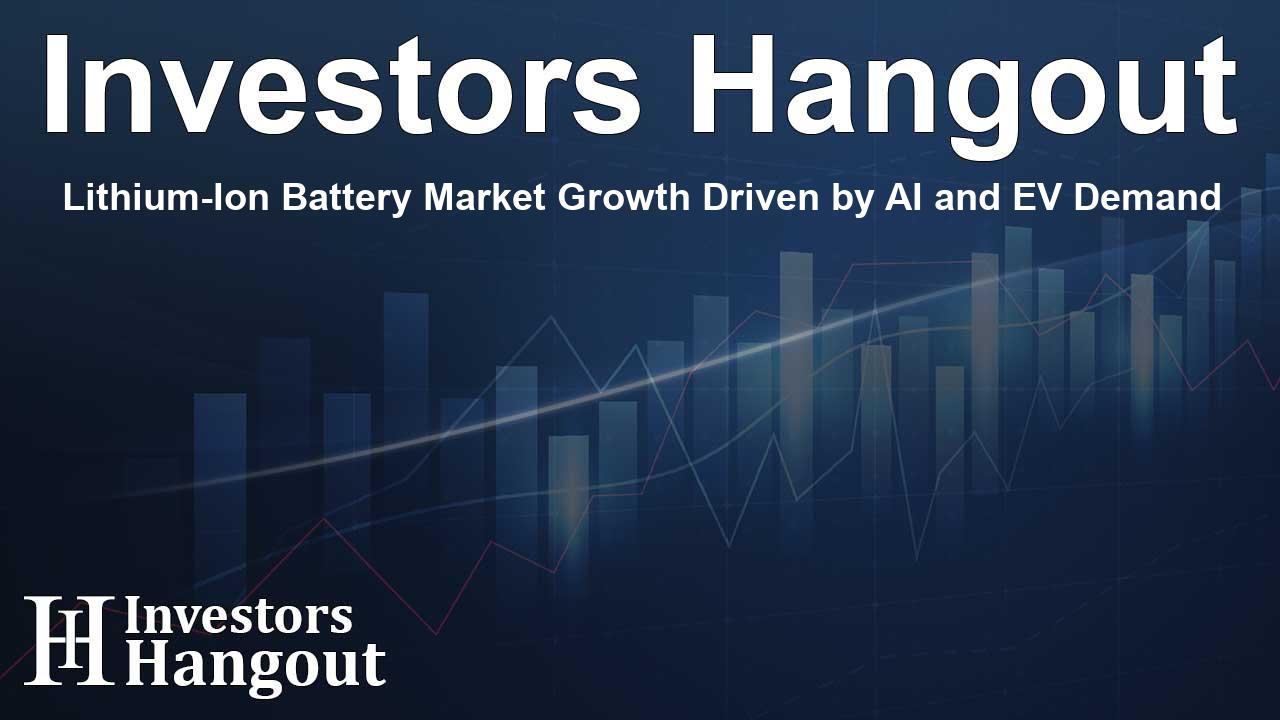Lithium-Ion Battery Market Growth Driven by AI and EV Demand

Insights on lithium-ion battery market growth
The global lithium-ion battery market is on the brink of significant expansion, with projections indicating a remarkable growth of USD 448.8 billion from 2024 to 2028. This upward trend underscores the increasing demand driven largely by consumer electronics and the electric vehicle (EV) sector. The market's Compound Annual Growth Rate (CAGR) is estimated to be around 42.93% during this period, reflecting the escalating reliance on lithium-ion technology across multiple industries.
Understanding the market dynamics
Consumer Electronics and EV Demand
Consumer electronics have been pivotal in fostering the demand for lithium-ion batteries. Devices such as smartphones, laptops, and tablets not only require efficient power sources but also lightweight and compact batteries. Moreover, the transition towards electric vehicles adds a surge in demand for these batteries, as manufacturers prioritize energy density and long-life performance capabilities. With over 50% of battery usage pivoting towards EVs, this element is vital for understanding the market's expansion.
The Impact of AI Technology
Artificial Intelligence (AI) is also awakening new frontiers in battery technology, enhancing efficiency and optimizing performance. AI algorithms analyze usage patterns and environmental factors, leading to smarter battery management systems that predict when batteries need charging or maintenance. This innovation not only increases battery life but also improves overall environmental sustainability as it maximizes energy retention.
Market Segmentation and Product Types
Various lithium-ion battery types cater to specific applications and industries. Some of the predominant types include lithium nickel manganese cobalt (NMC), lithium titanate, lithium iron phosphate, and lithium cobalt oxide. Each variation offers unique advantages in terms of energy density, lifespan, and charge cycles. For instance, NMC batteries are often utilized in the automotive sector due to their impressive energy output and efficiency.
Geographic Insights
Globally, regions are striving for stricter environmental protections, thereby increasing their electric vehicle adoption rates. Governments around the world are establishing regulations to phase out combustion engine vehicles in favor of battery-operated solutions. These initiatives are particularly prevalent in Europe, North America, and parts of Asia where ambitious targets for EV sales have been set. This shift not only prompts market growth but also stimulates advancements in battery production methods.
Challenges in the Lithium-Ion Market
Supply Chain Disruptions
Despite the promising outlook, the lithium-ion battery market faces challenges largely related to supply chain management. The rising demand for lithium and cobalt, essential components in battery production, raises concerns about sustainability and resource availability. Companies within the industry are thus focusing on stabilizing their supply chains while diversifying sourcing strategies to mitigate potential disruptions.
Alternative Technologies
While lithium-ion batteries dominate, emerging technologies like solid-state batteries and lithium-air batteries are also on the horizon. These alternatives hold the promise of higher energy densities and improved safety features. However, they are still facing technical and production challenges before they can effectively replace conventional lithium-ion options.
Key Players in the Market
The competitive landscape is shaped by key market players such as A123 Systems LLC, BYD Co. Ltd., LG Chem Ltd., and Tesla Inc. These companies are involved in extensive R&D to innovate and improve battery technology, thus effectively catering to the dynamic demands of various markets. Partnerships, mergers, and collaborations are on the rise as these entities strive toward leading advancements and adapting to ever-evolving consumer needs.
Frequently Asked Questions
What is driving the growth of the lithium-ion battery market?
The primary drivers are the demand for electric vehicles and consumer electronics, along with advancements in AI technology influencing battery management systems.
Which companies are leading the lithium-ion battery market?
Key industry players include A123 Systems LLC, BYD Co. Ltd., LG Chem Ltd., Tesla Inc., and others who are focusing on innovation and strategic partnerships.
What challenges does the lithium-ion battery market face?
The main challenges involve supply chain disruptions due to a reliance on materials like lithium and cobalt and competition from new battery technologies.
How is AI impacting lithium-ion battery technology?
AI enhances battery management through predictive analytics, increasing performance efficiency and energy retention, while extending the life of batteries.
What types of lithium-ion batteries are popular in the market?
Popular types include lithium nickel manganese cobalt (NMC), lithium titanate, lithium iron phosphate, and lithium cobalt oxide, each catering to specific applications.
About Investors Hangout
Investors Hangout is a leading online stock forum for financial discussion and learning, offering a wide range of free tools and resources. It draws in traders of all levels, who exchange market knowledge, investigate trading tactics, and keep an eye on industry developments in real time. Featuring financial articles, stock message boards, quotes, charts, company profiles, and live news updates. Through cooperative learning and a wealth of informational resources, it helps users from novices creating their first portfolios to experts honing their techniques. Join Investors Hangout today: https://investorshangout.com/
Disclaimer: The content of this article is solely for general informational purposes only; it does not represent legal, financial, or investment advice. Investors Hangout does not offer financial advice; the author is not a licensed financial advisor. Consult a qualified advisor before making any financial or investment decisions based on this article. The author's interpretation of publicly available data shapes the opinions presented here; as a result, they should not be taken as advice to purchase, sell, or hold any securities mentioned or any other investments. The author does not guarantee the accuracy, completeness, or timeliness of any material, providing it "as is." Information and market conditions may change; past performance is not indicative of future outcomes. If any of the material offered here is inaccurate, please contact us for corrections.